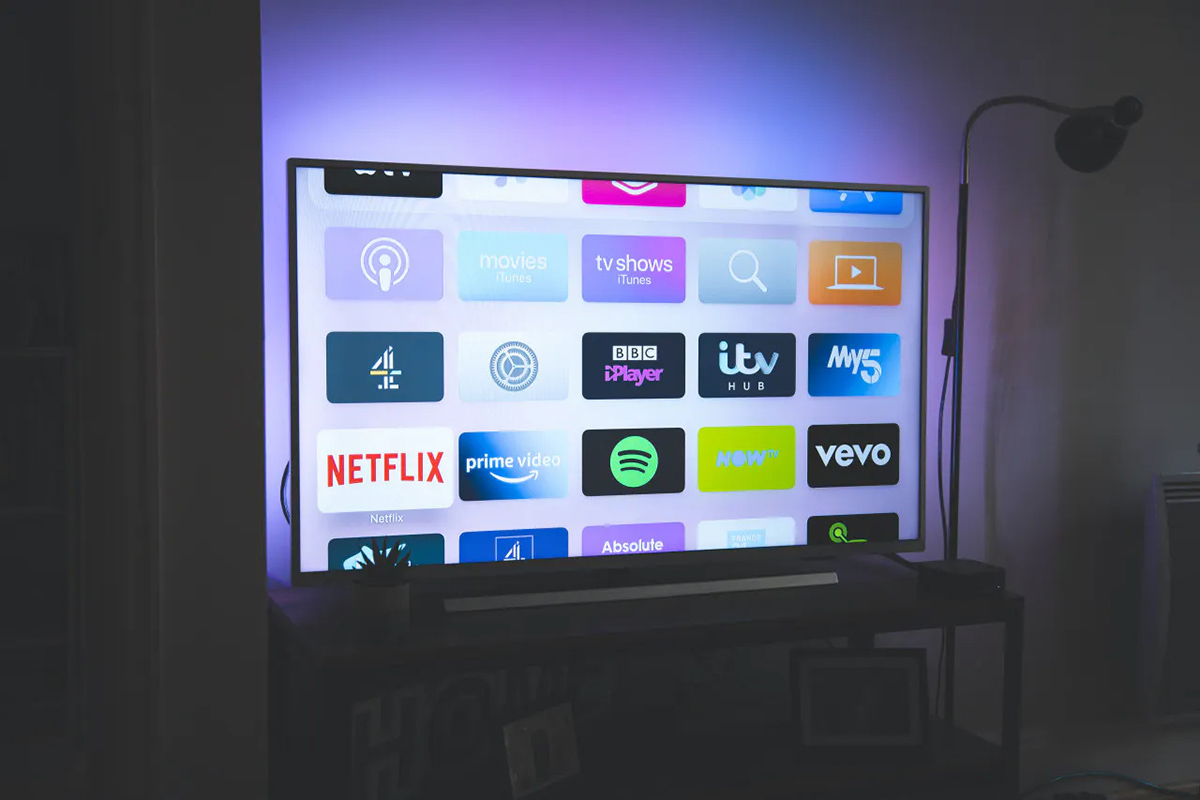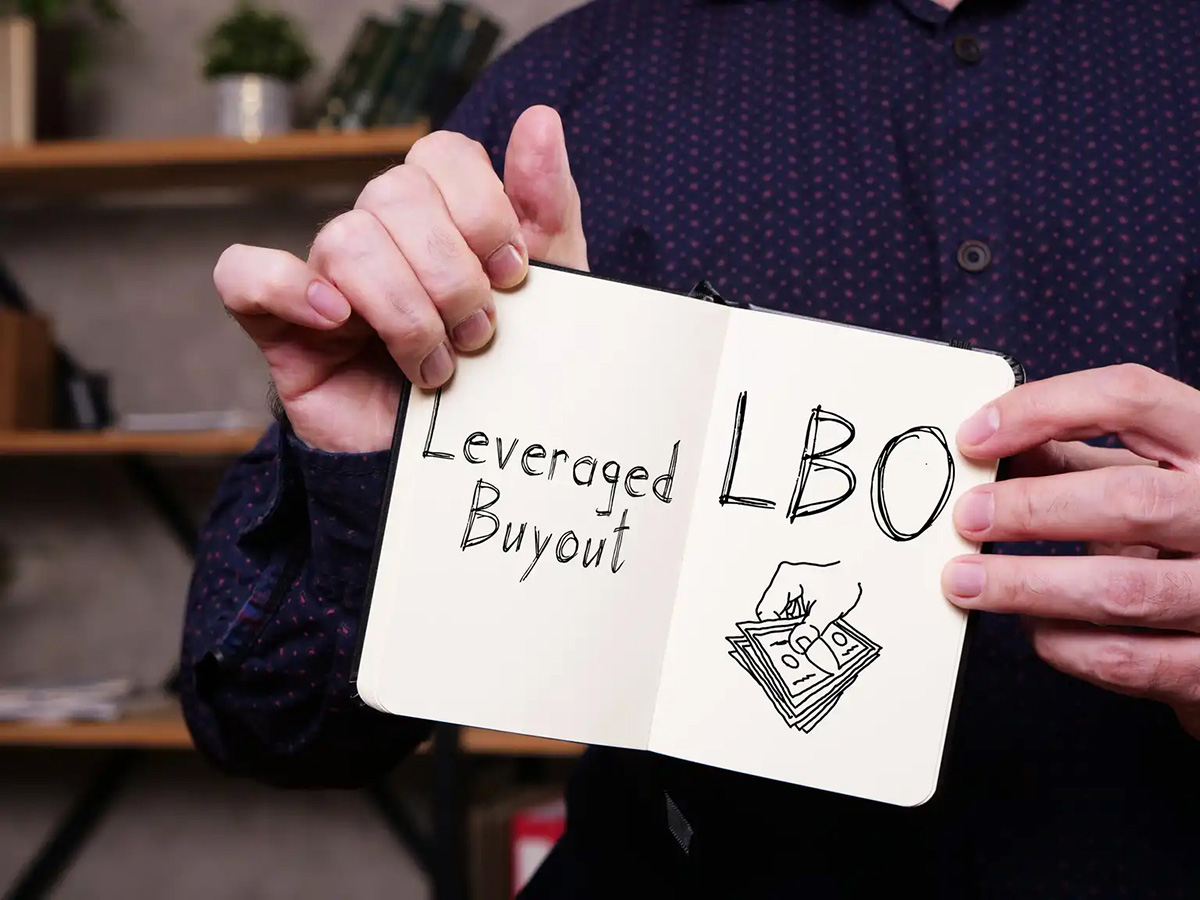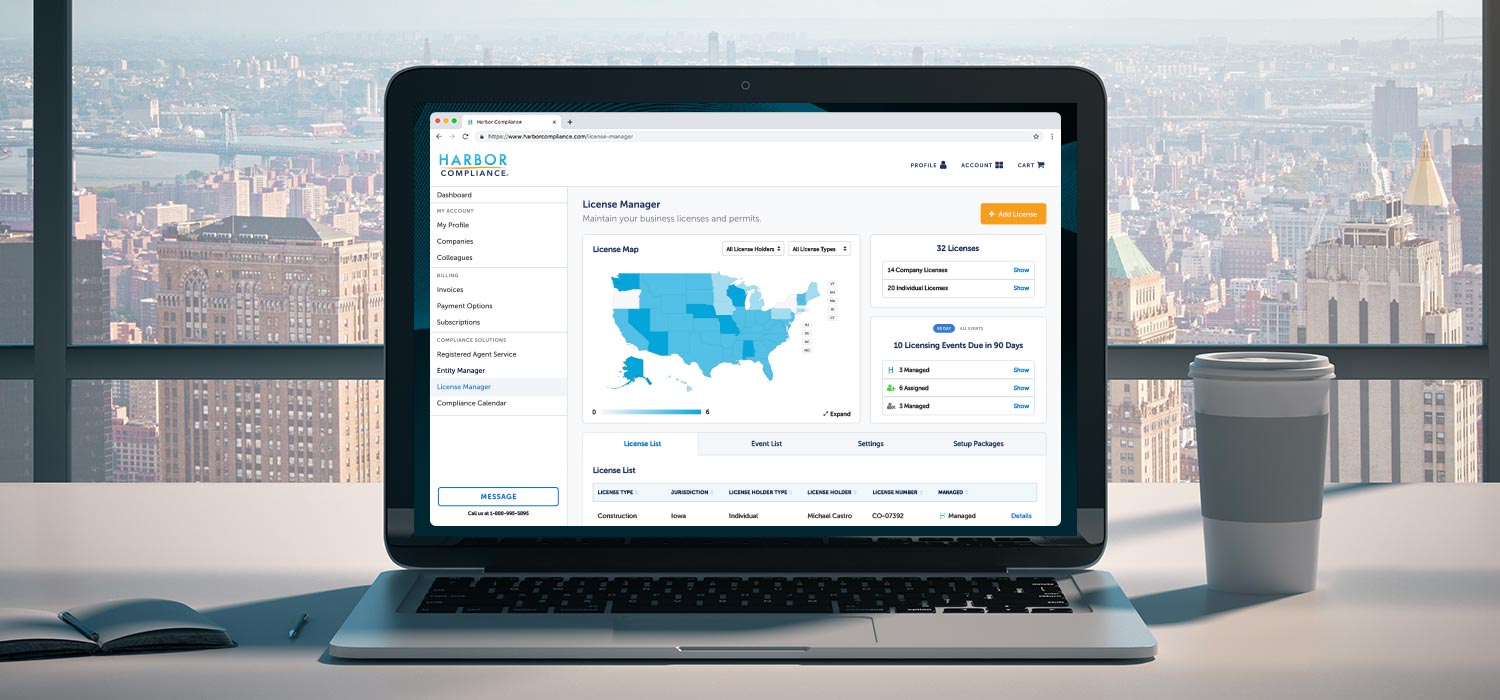

Finance
How Do Television Buyouts Work
Modified: December 30, 2023
Discover how television buyouts work from a financial perspective. Learn about the intricate details and strategic considerations involved in these deals.
(Many of the links in this article redirect to a specific reviewed product. Your purchase of these products through affiliate links helps to generate commission for LiveWell, at no extra cost. Learn more)
Table of Contents
- Introduction
- Overview of Television Buyouts
- Types of Television Buyouts
- How Television Buyouts Are Initiated
- Negotiating the Terms of the Buyout
- Legal and Financial Considerations
- Impact on Television Networks and Employees
- Case Studies of Successful Television Buyouts
- Challenges and Risks Associated with Television Buyouts
- Conclusion
Introduction
Television buyouts, also known as acquisitions, have become a common phenomenon in the dynamic and ever-evolving media industry. With the rise of streaming platforms and changing viewer preferences, television networks are constantly seeking ways to adapt and stay competitive. A television buyout involves one company acquiring the assets and controlling interests of another television network, leading to a substantial change in ownership and management.
The motivations behind television buyouts can vary. For some companies, it may be a strategic move to expand their market share, gain access to new content, or diversify their offerings. For others, it may be a defensive tactic to eliminate a rival or consolidate their position in the industry.
Television buyouts often have a significant impact on not only the companies involved but also the broader landscape of the television industry. They can reshape programming strategies, alter distribution agreements, and lead to changes in the creative direction of shows. Additionally, television buyouts have repercussions for employees, shareholders, advertisers, and even viewers.
In this article, we will explore the world of television buyouts in more detail. We will discuss the different types of buyouts, the process of initiating and negotiating a buyout, as well as the legal and financial considerations. Furthermore, we will evaluate the impact of television buyouts on networks and employees, examine recent case studies, and highlight the challenges and risks associated with these transactions.
Whether you’re a television executive, an investor, or simply interested in the inner workings of the industry, this article will provide valuable insights into how television buyouts work and their implications for the media landscape.
Overview of Television Buyouts
Television buyouts play a significant role in shaping the media landscape, allowing companies to expand their reach, gain access to valuable content, and strengthen their position in the industry. In essence, a television buyout involves one company acquiring another television network, typically through a purchase of its assets or a majority stake in its ownership.
Buyouts can occur between both traditional broadcast networks and digital streaming platforms, highlighting the rapid transformation of the television industry. With the rise of streaming services such as Netflix, Amazon Prime, and Hulu, these platforms often become attractive targets for larger media conglomerates seeking to tap into their subscriber base and original programming.
The motivations behind television buyouts can vary. For some companies, it may be a strategic move to gain a competitive edge or expand their market share. They may seek to acquire successful programs, intellectual property rights, or established talent to bolster their content offerings. Additionally, buyouts can provide access to a larger audience and global distribution platforms.
Furthermore, television buyouts can lead to cost savings and operational efficiencies by streamlining operations, consolidating resources, and reducing redundancy. This can be achieved through the integration of production facilities, merging back-office functions, and implementing shared services across the combined entity.
Buyouts can also bring about changes in programming strategies and audience targeting. The acquiring company may have a different demographic focus or preferences, leading to a shift in content creation and scheduling. In some cases, the acquired network’s programming may be rebranded or repositioned to align with the buyer’s existing portfolio.
It is important to note that television buyouts are not without challenges and risks. The integration of different corporate cultures, management styles, and creative visions can present hurdles during the post-acquisition phase. Additionally, regulatory approvals and stakeholder approvals may be required, adding complexity to the process.
In the following sections, we will delve deeper into the types of television buyouts, the process of initiating and negotiating a buyout, as well as the legal and financial considerations involved.
Types of Television Buyouts
Television buyouts can take various forms, each with its own implications for the companies involved and the industry as a whole. Understanding the different types of buyouts can provide insights into the motivations behind the acquisition and the potential impact on programming and distribution. Let’s explore some common types of television buyouts:
- Asset Acquisition: In an asset acquisition, the acquiring company purchases the assets of the target television network. This can include physical assets such as production facilities, equipment, and studios, as well as intangible assets like intellectual property rights, program libraries, and contracts. The acquiring company gains control over the acquired network’s assets and can integrate them into their own operations or use them to enhance their content offerings.
- Equity Investment: In an equity investment buyout, the acquiring company purchases a significant stake in the ownership of the target television network. This allows the acquiring company to have a controlling interest in the network and influence its strategic decisions. Equity investment buyouts often involve a financial investment by the acquiring company and can provide access to the target network’s revenues and future profits.
- Mergers: A merger occurs when two television networks combine to form a single entity. This type of buyout is characterized by a mutual agreement between the networks’ owners to merge their assets, operations, and management. Mergers can lead to synergies and cost savings through the consolidation of resources, back-office functions, and programming strategies.
- Vertical Integration: Vertical integration buyouts involve the acquisition of a television network by a company operating in a different part of the media value chain. For example, a cable company acquiring a television network or a streaming platform acquiring a production studio. Vertical integration buyouts allow companies to control multiple stages of the content creation and distribution process, leading to greater efficiencies and control over the end-to-end viewer experience.
- Joint Ventures: A joint venture buyout occurs when two or more companies come together to establish a new entity to operate a television network. This type of buyout allows the companies to pool their resources, share risks and rewards, and leverage their respective expertise. Joint ventures can provide access to new markets, technological capabilities, and creative talent.
It is worth noting that these types of buyouts are not mutually exclusive and can be combined or adapted to suit the specific needs and circumstances of the acquiring and target companies.
In the next section, we will explore the process of initiating and negotiating a television buyout.
How Television Buyouts Are Initiated
Television buyouts typically begin with one company expressing interest in acquiring another television network. This expression of interest can be initiated by various parties, including media conglomerates, private equity firms, or even individual investors. The process of initiating a television buyout involves several key steps:
- Market Research and Target Identification: The acquiring company conducts thorough market research to identify potential targets for a buyout. This research involves analyzing the target network’s financial performance, programming portfolio, audience demographics, and competitive landscape. The acquiring company considers factors such as synergies, growth prospects, and strategic fit when evaluating potential targets.
- Expression of Interest: Once the acquiring company has identified a suitable target, it initiates contact with the target network’s management or owners to express their interest in acquiring the company. This initial contact is often kept confidential to avoid any potential disruption or speculation in the industry.
- Non-Disclosure Agreement (NDA): Before any detailed discussions take place, the acquiring company and the target network typically sign a non-disclosure agreement (NDA) to protect sensitive information shared during the buyout process. The NDA ensures that both parties maintain confidentiality and prevents the leaking of proprietary information that could harm the target network’s operations or negotiations.
- Due Diligence: The acquiring company then conducts due diligence on the target network. This involves a thorough investigation into the network’s financial records, programming contracts, legal agreements, and any potential risks or liabilities. The acquiring company assesses the value and viability of the target network and identifies any potential red flags or areas of concern.
- Letter of Intent (LOI): If the acquiring company decides to proceed with the buyout after completing due diligence, they typically issue a letter of intent (LOI) to the target network. The LOI outlines the general terms and conditions of the proposed buyout, including the purchase price, proposed timeline, and any contingencies. The LOI serves as a preliminary agreement between the acquiring company and the target network, indicating their intent to proceed with negotiations.
- Negotiations: Once the LOI is accepted by the target network, negotiations between the acquiring company and the target network’s owners or management commence. These negotiations involve discussions on the purchase price, the deal structure, post-acquisition management and integration plans, and any other terms and conditions that need to be agreed upon. Negotiations can be complex and may require the involvement of legal and financial advisors to navigate various legal and regulatory requirements.
- Definitive Agreement: After reaching an agreement on all terms and conditions, both parties enter into a definitive agreement, also known as a purchase agreement or acquisition agreement. This legally binding contract outlines the final terms of the buyout, including the purchase price, payment structure, representations and warranties, and any other relevant provisions. The definitive agreement prepares the groundwork for the completion of the television buyout.
It is important to note that each television buyout process is unique, and the specific steps and timelines can vary depending on the complexity and circumstances of the acquisition. Additionally, regulatory approvals and the involvement of other stakeholders may add additional layers of complexity to the initiation and negotiation process.
In the next section, we will delve into the process of negotiating the terms of a television buyout.
Negotiating the Terms of the Buyout
Negotiating the terms of a television buyout is a critical step in the acquisition process. It involves discussions between the acquiring company and the target network’s owners or management to reach an agreement on various aspects of the buyout. Successful negotiations require careful consideration of financial, legal, and operational factors. Here are some key areas that are typically negotiated during a television buyout:
- Purchase Price: The purchase price is one of the most crucial aspects of the buyout. The acquiring company and the target network negotiate the valuation of the network’s assets, intellectual property rights, and future revenue potential. The negotiating parties consider various factors such as historical financial performance, growth prospects, market conditions, and any synergies or risks associated with the acquisition.
- Payment Structure: The payment structure outlines how the purchase price will be paid to the target network’s owners. It can include cash payments, stock or equity in the acquiring company, or a combination of both. The parties negotiate the timing and terms of these payments, considering factors such as financial liquidity, tax implications, and the value of the acquiring company’s stock.
- Contingencies: Contingencies in the buyout agreement outline specific conditions that must be met for the acquisition to proceed. These conditions can include regulatory approvals, shareholder or board approvals, and the absence of any material adverse changes in the target network’s financial or operational circumstances. The parties negotiate the inclusion and wording of these contingencies to ensure a smooth transition and mitigate any potential risks.
- Management and Employee Transition: Negotiations often address the transition of management and employees from the target network to the acquiring company. This can involve discussions on severance packages, employment contracts, retention of key executives or creative talent, and the integration of staff into the acquiring company’s existing operations.
- Intellectual Property and Licensing: If the target network possesses valuable intellectual property rights, such as popular TV shows, movies, or trademarks, negotiations may involve licensing agreements or restrictions on the use of these assets. The parties discuss the terms of licensing agreements, potential royalty payments, and any limitations on the acquiring company’s use of the target network’s intellectual property.
- Post-Acquisition Operations: Negotiations also cover post-acquisition operational matters, including the integration of systems, processes, and technologies. The acquiring company and the target network’s management discuss how the combined entity will operate, any restructuring plans, and the allocation of resources to optimize efficiency and achieve synergies.
Throughout the negotiation process, both parties engage in give-and-take discussions to find common ground and ensure a mutually beneficial outcome. Legal and financial advisors often play a crucial role in mediating these negotiations, providing guidance on the legal implications and financial considerations of various terms and conditions.
Once the negotiations are finalized and the parties reach a consensus on the terms of the buyout, they enter into a definitive agreement, which serves as the legal framework for the completion of the television buyout.
In the next section, we will explore the legal and financial considerations involved in television buyouts.
Legal and Financial Considerations
Television buyouts involve complex legal and financial considerations that are crucial to a successful acquisition. These considerations ensure compliance with regulatory requirements, protect the interests of all parties involved, and mitigate potential risks. Let’s examine some of the key legal and financial aspects of television buyouts:
- Regulatory Approvals: Television buyouts often require regulatory approvals from governmental bodies such as the Federal Communications Commission (FCC) in the United States or similar regulatory authorities in other countries. These approvals ensure compliance with media ownership rules and prevent monopolistic practices. The acquiring company must navigate the regulatory landscape and obtain the necessary licenses or approvals before the buyout can be completed.
- Contract Review: During the due diligence process and negotiation phase, legal advisors carefully review the contracts and agreements of the target network. This includes distribution contracts, licensing agreements, talent agreements, and any other legal documents that may impact the rights or obligations of the acquiring company post-acquisition. The purpose is to identify any potential legal risks or liabilities and ensure the smooth transfer of contractual obligations.
- Tax Implications: Financial advisors play a critical role in assessing the tax implications of a television buyout. They analyze the tax structure of the acquiring company and the target network, considering factors such as capital gains tax, income tax, and any tax benefits or incentives that may arise from the transaction. Financial advisors seek to optimize the financial outcome for both parties while ensuring compliance with tax regulations.
- Financial Due Diligence: Financial due diligence is a comprehensive assessment of the target network’s financial health, performance, and future prospects. It involves a thorough review of the network’s financial statements, cash flow analysis, debt obligations, and revenue streams. Financial advisors assess the financial viability of the target network, identify potential risks or inaccuracies, and provide insights to support negotiations and valuation.
- Valuation and Purchase Price Allocation: Determining an accurate valuation of the target network is essential for the buyout. Financial advisors use various valuation methods, such as discounted cash flow analysis or comparable company analysis, to estimate the fair market value of the network’s assets and future revenue potential. Additionally, advisors assist in the allocation of the purchase price to different components, such as tangible assets, intellectual property, and goodwill, which can have important financial and tax implications for both parties.
- Integration Planning: Financial considerations also include post-acquisition integration planning, which involves identifying synergies, cost-saving opportunities, and potential revenue growth from the combined entity. Financial advisors assist in developing financial projections, integration timelines, and cost estimates for integrating operations, systems, and staff. This ensures a smooth transition and maximizes the financial benefits of the buyout.
Legal and financial advisors work closely with the acquiring company and the target network’s management to navigate these considerations, provide guidance, and ensure compliance with legal and financial regulations. Their expertise is vital in protecting the interests of both parties and mitigating any potential legal or financial risks associated with the television buyout.
In the following section, we will explore the impact of television buyouts on television networks and employees.
Impact on Television Networks and Employees
Television buyouts have a significant impact on both the acquired network and its employees. The changes brought about by a buyout can reshape the landscape of the television industry and transform the working environment for those involved. Let’s explore the impact on television networks and employees:
Strategic Direction and Programming: Following a buyout, the acquiring company often takes charge of the strategic direction and programming decisions of the acquired network. This can lead to changes in programming strategies, scheduling, and target audience demographics. The acquiring company may have different content preferences or may want to align the acquired network’s programming with its existing portfolio, resulting in a shift in the overall programming direction.
Operational Consolidation: Television buyouts often involve operational consolidation to streamline resources, reduce costs, and eliminate redundancy. This can lead to the integration of production facilities, combining back-office functions, and optimizing distribution networks. As a result, some job roles may be redundant, and employees may face reassignment, relocation, or potential layoffs due to overlapping positions.
Creative Control and Talent: With a change in ownership, creative control and talent management can undergo significant shifts. The acquiring company may introduce new executives or creative teams, impacting the creative decision-making process and potential changes in talent personnel. This can result in the retention of key talent or the departure of some individuals due to differences in creative vision or contractual obligations.
Employment and Benefits: Television buyouts can bring changes to the employment terms and benefits of the acquired network’s employees. The acquiring company may revise compensation packages, benefits plans, and employment contracts, which may have both positive and negative impacts on employees. Additionally, there may be changes in company culture, work policies, and reporting structures, creating new dynamics and challenges for employees.
Access to Resources and Opportunities: Being part of a larger media conglomerate or having access to financial resources and distribution networks can present new opportunities for the acquired network’s employees. This can include exposure to a broader range of projects, access to cutting-edge technology, and potential career advancement within the larger organization. However, it may also come with increased pressure to deliver results and meet the expectations set by the acquiring company.
Industry Competition and Market Dynamics: Television buyouts can impact the competitive landscape within the television industry. Consolidation can lead to stronger market players with increased bargaining power, potentially changing the dynamics between networks and content creators. The acquisition may also trigger a ripple effect, prompting other networks or streaming platforms to explore their own buyout strategies to stay competitive.
It is essential for companies involved in television buyouts to handle the impact on television networks and employees with care and transparency. Effectively managing the transition and providing support to employees during the integration process can help alleviate uncertainty and maintain morale within the acquired network.
In the next section, we will examine case studies of successful television buyouts.
Case Studies of Successful Television Buyouts
Television buyouts have become prevalent in the media industry, with several successful acquisitions reshaping the television landscape. Let’s take a look at a few notable case studies of successful television buyouts:
1. The Walt Disney Company’s Acquisition of 21st Century Fox: In 2019, The Walt Disney Company acquired 21st Century Fox in a landmark deal worth $71.3 billion. This buyout gave Disney control over major assets, including the film studio, television production units, and a significant stake in streaming platforms Hulu and Disney+. The acquisition positioned Disney as a dominant player in the media industry, consolidating its content library and expanding its reach in both traditional and digital platforms.
2. Comcast’s Acquisition of NBCUniversal: In 2011, Comcast, the largest cable television company in the U.S., acquired a majority stake in NBCUniversal from General Electric. The acquisition allowed Comcast to gain control over NBCUniversal’s assets, including the NBC broadcast network, Universal Studios, and several cable networks. This buyout enhanced Comcast’s content offerings, enabled cross-promotion between its cable and broadcast platforms, and solidified its position as a major player in the media and entertainment industry.
3. Amazon’s Acquisition of Twitch: In 2014, Amazon acquired the popular live streaming platform Twitch for approximately $970 million. This acquisition marked Amazon’s entry into the gaming and eSports space as Twitch had established itself as a leading platform for live streaming of video games. The buyout provided Amazon with a direct connection to the gaming community and a platform to explore new revenue streams, such as game sales and advertising.
4. AT&T’s Acquisition of Time Warner: In 2018, AT&T completed its acquisition of Time Warner, now known as WarnerMedia, for $85.4 billion. This acquisition brought together a telecommunications giant with a major media conglomerate, combining AT&T’s distribution networks with Time Warner’s extensive content library, which includes HBO, Warner Bros., and Turner Broadcasting System. The acquisition aimed to create a vertically integrated company capable of delivering content across multiple platforms, including traditional cable, streaming, and mobile.
These case studies highlight the strategic advantages and synergies that can be obtained through successful television buyouts. They illustrate how acquisitions have allowed companies to expand their content portfolios, access new markets, and strengthen their competitive position in the evolving media landscape.
In the next section, we will discuss the challenges and risks associated with television buyouts.
Challenges and Risks Associated with Television Buyouts
While television buyouts can bring significant benefits and opportunities, they also come with inherent challenges and risks that need to be carefully considered. Understanding and mitigating these risks are essential for a successful acquisition. Here are some of the common challenges and risks associated with television buyouts:
Integration Challenges: Integrating two different organizations with their own corporate cultures, management styles, and operational processes can be challenging. Achieving a smooth integration requires effective communication, collaboration, and alignment of goals and strategies. Failure to address integration challenges can lead to conflicts, loss of talent, and disruptions in operations.
Financial Uncertainty: Television buyouts involve financial investments and future revenue projections. However, accurately forecasting the financial performance of the acquired network post-acquisition may be challenging due to factors such as changing market dynamics, evolving viewer preferences, and intensified competition. Financial uncertainty can affect the return on investment and the overall financial health of the acquiring company.
Regulatory Hurdles: Buyouts in the television industry often face regulatory scrutiny, as they can impact media ownership concentration and competition. Obtaining regulatory approvals can be time-consuming and expensive, and there is a risk of the regulatory authorities imposing conditions or even blocking the acquisition altogether. Failure to navigate the regulatory landscape effectively can pose significant challenges to completing the buyout.
Creative and Talent Integration: Television buyouts can lead to creative clashes or difficulties in integrating the acquired network’s creative talent into the acquiring company’s operations. Differences in creative visions, working styles, and contractual obligations can create challenges in retaining key talent and maintaining audience loyalty. Proper management and clear communication are crucial to address these integration challenges.
Market and Technological Shifts: The television industry is constantly evolving, with changes in viewer behavior, advancements in technology, and evolving content consumption patterns. Television buyouts must anticipate and adapt to these shifts to remain competitive. Failure to adapt to market and technological changes can result in decreased viewership, loss of market share, and diminished value of the acquisition.
Reputation and Branding: Television buyouts can have a profound impact on the reputation and branding of both the acquiring company and the acquired network. Negative public perception, backlash from stakeholders, or difficulties in aligning brand identities can harm the overall success of the acquisition. Maintaining positive brand reputation and effectively managing public relations are vital to mitigate these risks.
It is crucial for companies involved in television buyouts to conduct thorough due diligence, assess the potential risks and challenges, and develop comprehensive strategies to mitigate them. Successful navigation of these risks can lead to a smoother integration process and maximize the long-term benefits of the acquisition.
In the concluding section, we will summarize the key insights discussed in this article on how television buyouts work.
Conclusion
Television buyouts have become a common occurrence in the ever-evolving media landscape. These acquisitions, driven by strategic motivations and market dynamics, can greatly impact the television industry, the acquired networks, and their employees.
Throughout this article, we have explored the various aspects of television buyouts, including the types of buyouts, the initiation and negotiation process, legal and financial considerations, and the challenges and risks involved. We have also examined case studies of successful buyouts that have reshaped the television industry.
Television buyouts offer opportunities for acquiring companies to expand their content libraries, gain access to new markets, and strengthen their competitive position. However, these acquisitions also pose challenges and risks, such as integration difficulties, financial uncertainties, regulatory hurdles, and creative and talent management issues.
To navigate these complexities successfully, companies must conduct thorough due diligence, engage legal and financial advisors, and develop robust integration strategies. Clear communication, meticulous planning, and effective execution are paramount to ensure a smooth transition and maximize the benefits of the acquisition.
As technology continues to evolve, viewer preferences change, and market dynamics shift, the television industry will likely witness more buyouts and consolidation. Adapting to these changes, embracing innovative strategies, and staying responsive to viewer demands are crucial for companies to thrive in this dynamic landscape.
Whether you are a television executive, an investor, or simply interested in the media industry, understanding how television buyouts work is essential. By being aware of the opportunities and challenges associated with these acquisitions, you can navigate the ever-changing television landscape with greater insight and confidence.














